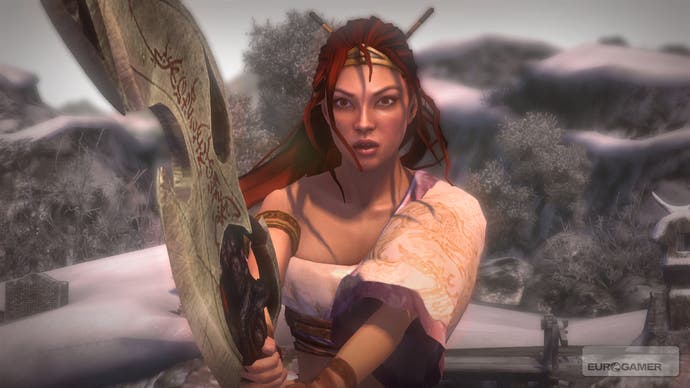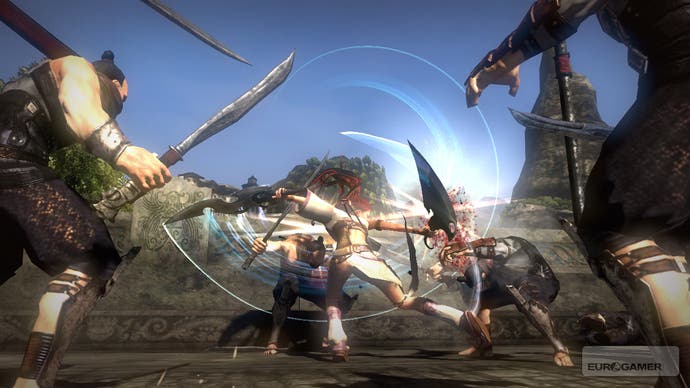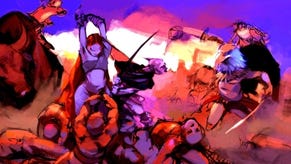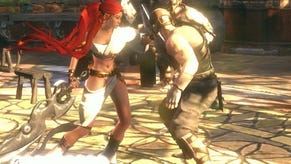Heavenly Sword
Sevenly flawed.
The most disappointing games aren't the low-scoring Driver 3 out of 10s - those are just the road crashes we point and laugh at. Those are beyond redemption. No, the really gutting ones are always the ones that just fall short of greatness, where you feel sure that with a bit more polish and refinement that they could (and perhaps should) have been amazing. Heavenly Sword is that sort of game: your sense of disappointment is amplified because it's clear that Ninja Theory handled so many elements exquisitely. It really did have the potential to be the PS3's first must-have title - yet, somewhere along the line it doesn't quite deliver. For PS3 owners, the wait for the killer-app goes on.
But let's stay within the realms of exquisiteness to kick-off with - it's a nice place this time of year. For probably only the second time since we fired up the PS3 have we been moved to drag the sofa a bit closer to the TV. it's a game that you'll want to truly bask in, such is the visual opulence on show. It's as if Ninja Theory fell in love with the art style of ICO and fancied the idea of a setting a truly bombastic God of War-style hackandslash within it. Not a bad idea at all, when you consider how well both of those went down with you lot.
Art breaker
There are times within Heavenly Sword's six chapters when the technical accomplishments offer an embarrassment of riches; breathtaking moments designed to make you just stop, mouth agog, and wallow in some of the most ambitious, picturesque landscapes and ornate environments ever committed to a digital canvas. Some might boringly label it as 'truly next gen' or whatever - I'll just thank the art team for investing so much effort in making the simple process of traversing the game world a hugely entertaining experience in its own right. If anything's responsible for dragging you along through Heavenly Sword, it's the way the game makes you play the digital tourist, eager to find out where else the game can push the PS3. It's not as if we've had many titles that have done that so far.

It's a game that also takes the business of narrative extremely seriously, so it's just as well that such an emotive, desperate tale can be expressed on-screen in ways that have eluded game developers the world over - until now. Nariko's battle to keep the eponymous Heavenly Sword out of the hands of the evil King Botan is one told over a regular procession of in-engine cut-scenes, using the most sophisticated facial animation system seen outside of the CG movie business.Aided and abetted by the expert touch of Andy Serkis, not only do the character models look uncannily realistic (apart from the hair, which still looks like polygonal dreadlocks), but convey the kind of expression and emotion not normally associated with mere videogames. With near-perfect lip syncing adding a final layer to the effect, it's clear that an incredible amount of effort went into the cinematic appeal of Heavenly Sword. Unlike so many other games released on PS3 to date, you really appreciate the generational leap in the production values. Even Square-Enix's legendary teams would be impressed.
The problem with all this technical showboating is you need an equally great game within all the blockbuster presentation - and it's here where things start to unravel for Heavenly Sword. The crux of the matter is that the combat never quite feels as gratifying or assured as you'd hope. Lacking the hardcore depth of a Ninja Gaiden or Devil May Cry, nor as wonderfully accessible as, say, Onimusha or God of War, it sits in a kind of unsatisfying no-man's land between them, and goes its own way to the ultimate detriment of your overall enjoyment.
Dance stance

At its most basic, it does much the same thing as all of them. Yep, the square and triangle buttons get a good pasting again, with the heart of the game's uncomplicated combo system based on various button presses of every hackandslasher's most overworked symbols. Occasionally you might want to throw in a X for good measure, but more significant is the role played by use of L1 or R1 - the 'stance' modifier. Without using either you fight using the 'speed' stance's set of moves, which effectively gives you the ability to throw a flurry of quick sword-based manoeuvres, but do medium levels of damage. It also means you can counter your opponent's moves if you see a blue-ish hue and hit triangle just as they're about to land an attack.
If you hold down L1 you can pull-off the range attacks/counter. This chain blade attack might be pretty weak in isolation, but in the right context comes in incredibly useful - such as breaking up a gaggle of enemies if you're surrounded. As a counter, it can be essential - swishing away a hail of incoming arrows, say, or dispersing a wall of water heading towards you. By far the most deadly, though, is the heavy stance, performed by holding down R1 and mashing combos using triangle and/or square. Although it's a bit slower than the others, it's invaluable when timed right - and, likewise, an effective counter to have up your sleeve when the opportunity presents itself. Once you learn a few of the basic combos (or get lucky with button mashing), even the hardiest enemies hit the deck as they feel the full force of your blade.

Mastering Nariko's 'Superstyle' moves gives Ninja Theory the chance to zoom in on the action and show off some of its grisly, but never less than satisfying finishing moves. Essentially used as a payback for stylish, relentless killing sprees, the better you get at killing, the better the action looks. Countering successfully, and an unbroken string of kills bring delicious, grisly rewards.
While there's no denying that the combat can be brutally thrilling to watch, at no time during the game did we ever feel fully in control of our actions. Wild, random slashing would often be just as effective a technique as studying the combos and attempting to follow them to the letter - so, inevitably as new moves get unlocked, you tend to stop paying that much attention to the progression system and play on furious, rhythmic instinct. So long as you're making progress, it hardly seems to matter if you're button mashing or not - sad to say.








